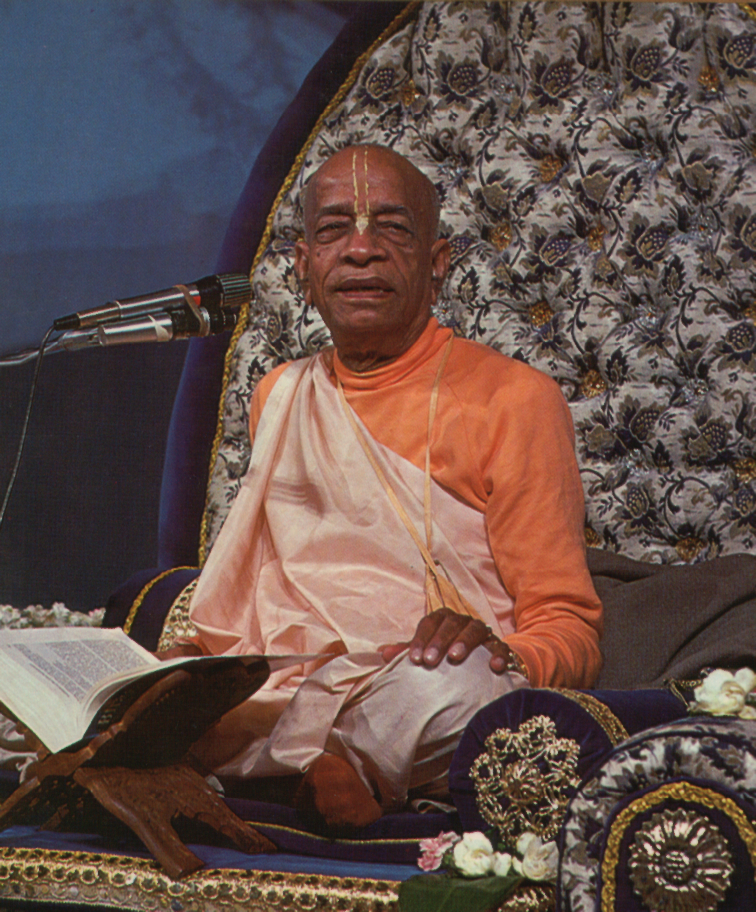
Back To Prabhupada, Issue 41, Autumn 2013
ecently, Bhaktivedanta Manor, ISKCON's UK headquarters, published a comprehensive Vision Statement ("VS"), which will be used to guide their activities for the future. The VS was the fruit of intensive discussions with dozens of devotees representing multiple devotee communities over an extended period of two and a half years, and is therefore considered to be a document of immense significance. The statements in the shaded boxes below are excerpted from this VS. All emphases have been added.
The VS states as its basis:
"The consultation matrix for decision and policymaking should be based on the guru, sadhu and sastra principle"
It then offers a definition of what these terms mean:
"For leadership and management purposes the terms guru, sadhu & sastra, should be understood as follows:
Guru: His Divine Grace Srila Prabhupada;"
The VS correctly accepts that the term "guru" in "Guru, Sadhu and sastra" ("GSS") refers to Srila Prabhupada. However, Srila Prabhupada further defines the "Guru" term in "Guru, Sadhu and sastra" as referring specifically to the diksa guru:
"Sadhu, sastra, and guru corroborate one another. A sadhu is he who talks and acts in terms of the scriptures. And the guru is a sadhu who personally teaches his disciples according to the scriptures."
(Beyond Illusion & Doubt, Chapter 7)
"There are three things, sadhu-sastra-guru. So to accept one, you have to take the opinion of the other two. Then you'll get the right way. Just like who is a guru? That is stated in the sastras. Srotriyam brahma-nistham. Sastra says, tad-vijnanartham sa gurum evabhigacchet: "One must approach a guru.""
(Room Conversation, 18/7/1973)
"Tad-vijnanartham sa gurum evabhigacchet: when one is interested in the transcendental subject matter of the Absolute Truth, he should be initiated. Such a person should approach a spiritual master in order to take diksa."
(Nectar of Instruction, Verse 5)
Thus, Srila Prabhupada makes it clear that the "Guru" referred to in GSS is the diksa guru one approaches for initiation. The VS has a section at the outset under its "Preface" titled "endorsement by the UK GBC", which states:
"It is both my privilege and honour to endorse this vision statement for Bhaktivedanta Manor...Praghosa Das Governing Body Commissioner"
Therefore, the VS's declaration that "Guru" in GSS refers to Srila Prabhupada means that the GBC have endorsed (unwittingly) the IRM's position that Srila Prabhupada is the diksa guru for ISKCON that everyone should approach for initiation. The significance of this can not be underestimated. In a widely distributed Vision Statement, compiled through consultation with many devotees, and endorsed by the GBC, there is a commitment from ISKCON in print that Srila Prabhupada is ISKCON's diksa guru! Jaya! Ironically, Bhaktivedanta Manor currently bans IRM supporters for the "crime" of believing that Srila Prabhupada is ISKCON's diksa guru. That is, for believing in what their own Vision Statement now states!
Having made this correct and momentous declaration, unfortunately other parts of the VS display the confusion and misunderstanding regarding GSS which we detailed in the last issue (please see "The Truth About Guru, Sadhu and Sastra"). The VS claims that the terms in "Guru, Sadhu and Sastra" can also mean the following:
"Guru: The GBC Body
Sadhu: The respective GBC zonal secretary
Sastra: ISKCON law-book and current GBC resolutions"
Thus, the GBC have conveniently been installed as actually being present in every single category of Guru, Sadhu and Sastra! Yet, as we saw in the last section, Srila Prabhupada defines the "Guru" term as referring specifically to the diksa guru. He never defined it as referring to the GBC. So this definition has been fabricated by the VS. Similarly, Srila Prabhupada defines "sastra" as referring to the infallible word of God:
"The sastra cannot be changed. God's word cannot be changed. Then what will be the difference between God and ourself? He is always perfect. [...] Sadhu sastra guru-vakya, tinete kariya aikya. Sastra is never changed."
(Srila Prabhupada Lecture, 30/11/1976)
Yet, history has proven that GBC resolutions are far from being infallible, with resolutions openly admitting that previous resolutions were deviant (see the resolutions concerning the deviant "zonal acarya guru system", for example). Nor can the GBC guarantee that their future resolutions will not be subject to similar fallibility.
Another problem with falsely installing the GBC as being present in every category of GSS is the contradiction which arises. For example, GBC HH Sivarama Swami ("SRS") states that sadhus are defined as being departed gurus:
"Sadhus are those who were once guru, but they are no longer physically present."
(SRS Podcast, 13/12/2009)
However, the VS claims that the following also come under the "Sadhu" category:
"The temple president, temple council and all consultative bodies of devotees are included herein."
These devotees are clearly not in the elevated category of departed gurus that SRS defines as being applicable to the "Sadhu" category. Yet, the VS states that the following are also included under the "Sadhu" category:
"Senior ISKCON devotees -- local and international;"
which automatically includes GBC member SRS. Thus, if SRS is accepted as being a "sadhu", then his teachings regarding what a "sadhu" is, must also be accepted. Thus, if we accept one part of the VS, we must reject another!

GBC-endorsed statement
accepts Srila Prabhupada is ISKCON's diksa guru
|
a) The VS presents evidence that the GBC have accepted that Srila Prabhupada is indeed ISKCON's diksa guru!
b) However, the VS also demonstrates once again how GSS is misunderstood by ISKCON's leaders.
c) All this GSS confusion would be eliminated if one simply followed Srila Prabhupada's orders without question, since whatever he states is already automatically in line with GSS:
"Guru means who follows the sastra and sadhu. So there are three, the same."
(Srila Prabhupada Lecture, 30/11/76) |
Return to IRM Homepage